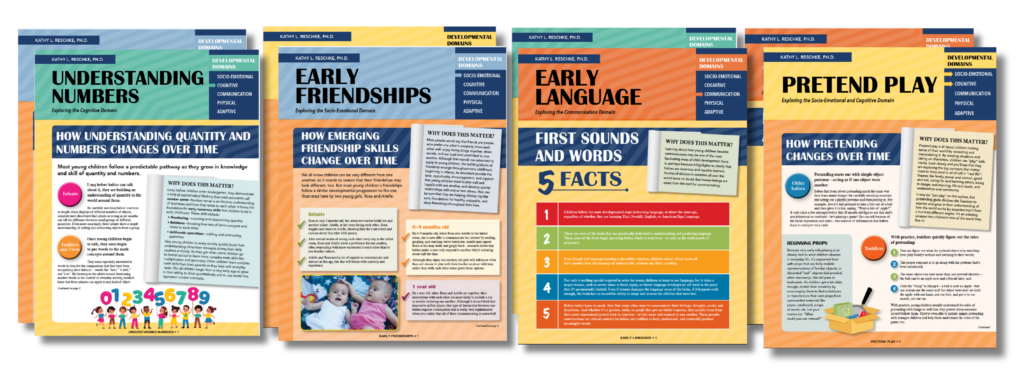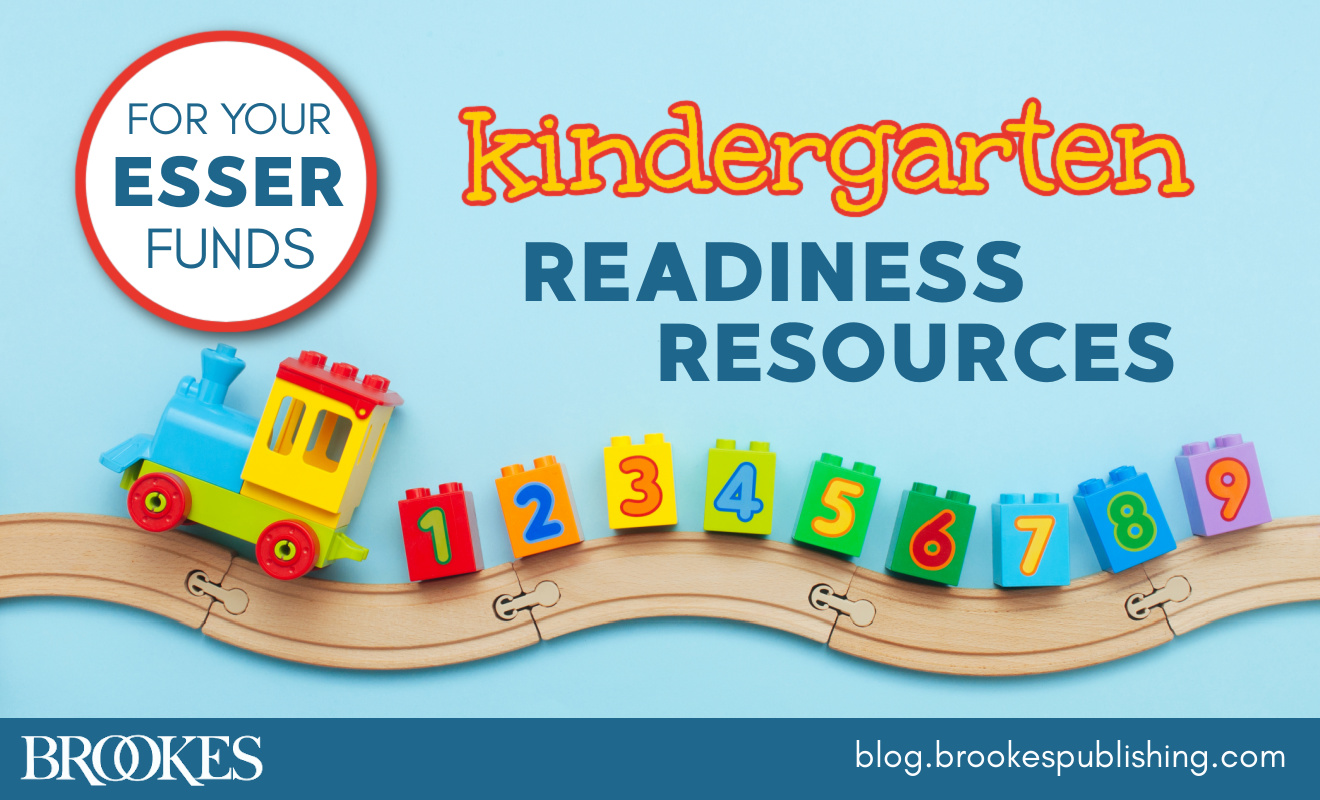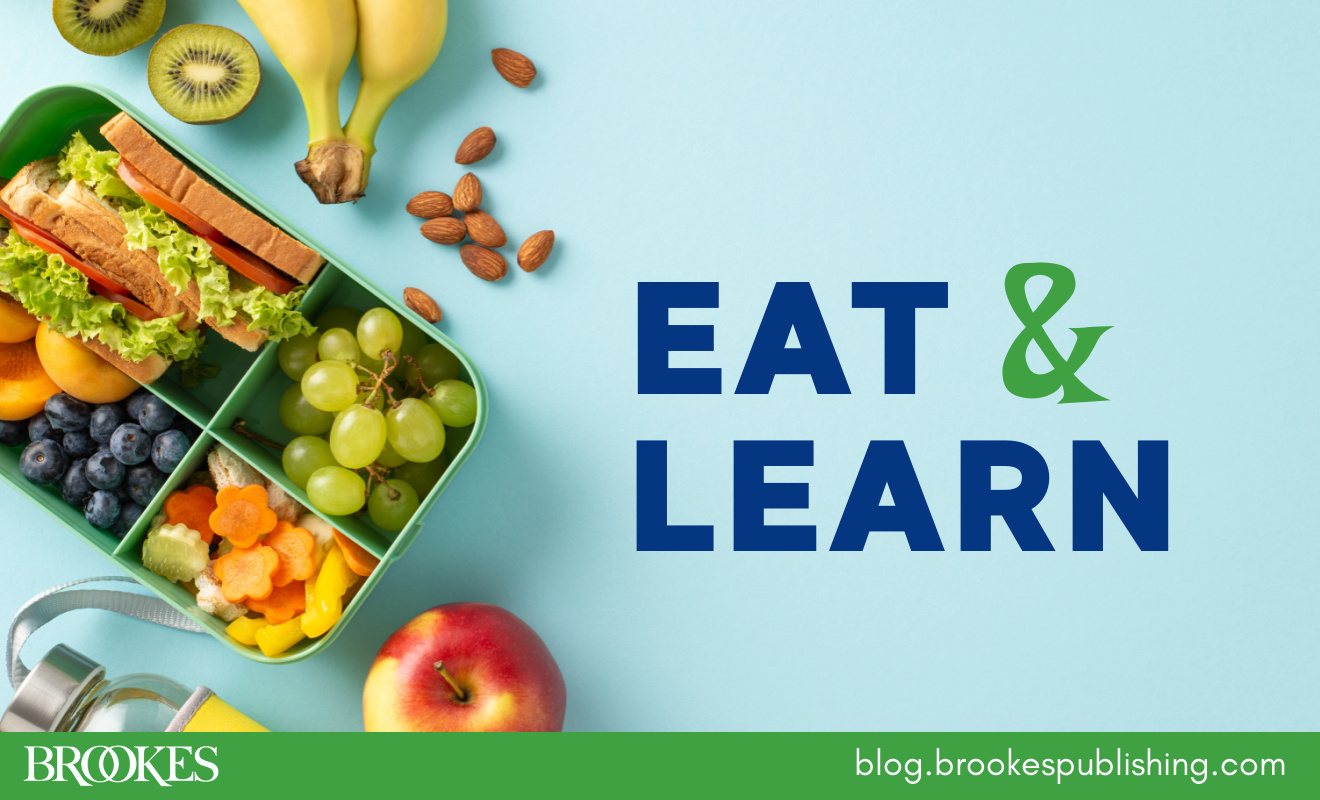A-Ha Moments & More: 5 Reasons Why Every Early Educator Needs These New Guides
February 13, 2025
Today the Brookes Blog is excited to welcome Kathy L. Reschke, Ph.D., an early childhood expert with more than 40 years of experience in the field. Dr. Reschke is here to talk about her Quick Reference Guides for Early Childhood Best Practices. Now available from Brookes, these 16 laminated, six-page guides put practical knowledge and strategies at the fingertips of every early childhood educator. Why did she develop these guides, and how will programs benefit? Read on to find out!
***
I’ve always loved learning about young children—why they do what they do and the amazing capabilities that make early childhood a time of such rapid growth. During the years that I taught young children, I happily accumulated books, articles, and conference presentation notes that fed my intellectual curiosity. But there was always a nagging question—how much of that knowledge actually made its way from my bookshelves to my interactions with the children I taught and cared for each day? Not a lot, I fear—or at least not nearly as much as I would have hoped.
The gap between the knowledge I devoured outside of my classroom and my teaching practices inside my classroom was too broad for me to easily bridge. Maybe you can relate?
What I needed was a tool to help bridge that gap. And that is why I created the Quick Reference Guides for Early Childhood Best Practices, so that ECE professionals can more easily access and make use of nuggets of insights about young children’s development and learning. I designed these guides so that, regardless of the setting in which you work, you would have a tool to help you integrate learning about children into your everyday practice of nurturing and teaching them.
 As I created the Quick Reference Guides for you, I focused on the features that my younger teacher-self would have wanted—the features that will make them a unique, treasured, well-used tool for you:
As I created the Quick Reference Guides for you, I focused on the features that my younger teacher-self would have wanted—the features that will make them a unique, treasured, well-used tool for you:
- Designed to be used. The first thing you’ll notice about the Guides is their format: colorful, brief, laminated, and “chunked.” I know firsthand that time is a precious commodity in an early childhood classroom! So each guide is brief enough to be easily digested and intentionally designed with graphics and section titles so you can easily and quickly find information. They are laminated and 3-hole-punched so you can keep them handy and reference them often.
- Bite-sized yet hearty. This isn’t information junk food—it’s meaty information about understanding and supporting young children, served in small bites. Each Guide is a brief but meaningful exploration into an area of development and practice, with equal portions of explanations and practical suggestions for interactions and activities, all based on current research and best practice.
- Intended to inspire “a-ha!” moments. The topic for each Guide will be a familiar aspect of teaching and caregiving to you, but further reading will uncover insights about underlying development that will leave you saying, “So that’s what’s going on in there!” I firmly believe, and have seen in my own teaching, that the best ECE practice happens when a professional is observant and curious about children, and experiences lightbulb moments of insight that lead them to adjust their teaching in response. It’s my intent that the Guides will inspire many of those moments.
- Wholistic in scope. While professional development resources tend to separate information into developmental domains and ages, those of us who have worked with young children are acutely aware of two important facts: 1) all of the domains are integrated and affect each other in “real life,” and 2) development and learning is cumulative and progressive, with each skill or phase building on what’s come before and leading to what will come next. Within each Guide, you will find content that reflects both of these foundational truths. That means that all professionals who work with children anywhere in the birth-to-five age range will find useful insights and ideas that reflect a whole child perspective.
- Shareable food for thought—and conversation. Gaining a new insight about children or seeing the positive effects of a new idea you’ve tried is so rewarding—but it’s even better when you share it with others! (Have you ever noticed that the best part of conferences is the conversations that you have over lunch as you talk with others about the things you’ve all learned?) One of the benefits of the bite-sized format of the Guides is that the content is so easy to share with others. Here are a few ideas I can imagine:
- Did you learn an interesting tidbit about development from a Guide? Bring it up with a colleague. Talk about how you see it reflected in the children you work with and what implications it might have for your everyday practice.
- Are you excited about a new approach or activity you learned from the guide and its impact on a particular child? The Guide will give you everyday language to share with their parent or caregiver what you tried and why you think it worked so well. Then let the conversation take off from there!
- Has the mini-exploration of one of the Guides inspired you or spurred your excitement? Use it as a topic for discussion, observation, and further exploration at a staff meeting or conference presentation.
As excited as I am to introduce the Quick Reference Guides for Early Childhood Best Practices to you, I’m even more excited to hear your stories of insights and experiences as you use them in your practice. Our knowledge as a field and as individual practitioners is built and enhanced as we learn from one another. It’s my sincere hope that these Guides can be a useful tool in the process.
Learn more about these essential Quick Reference Guides and order them for your program’s professional learning toolbox!
Quick Reference Guides for Early Childhood Best Practices
By Kathy L. Reschke, Ph.D.
Ideal for staff professional learning in preschools and across districts, these practical guides are available in convenient packs of 5 for bulk purchases. (Each pack contains 5 of the same guide.) Individual guides are also available.




Write a Comment
Your email address will not be published. Required fields are marked *
Post a Comment